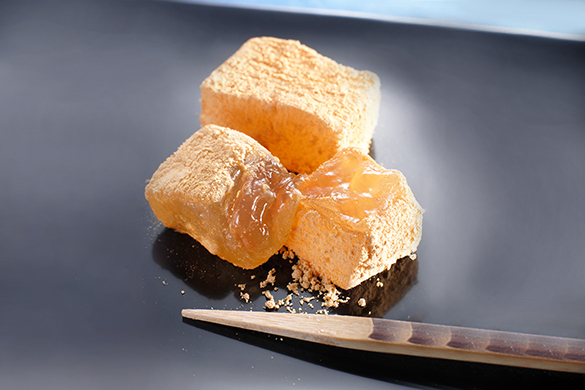Greetings from the president
Hirohachido began producing Hon-kudzu back in 1875.
We have grown into one of the leading Hon-kudzu*1 producers of Japan,
and we export to ten countries worldwide. We are the only company
that has an integrated system for the procurement, manufacturing,
and product development of Hon-kudzu and Hon-warabi*2.
Our successful automation of an age-old traditional manufacturing
process using computers has improved product quality and increased production.
We are also taking environmentally friendly measures,
including the enhancement of our wastewater treatment facility.
We obtained an ISO22000 certification in 2008 and an FSSC22000 in 2017.
We will continue to meet expectations by diligently working to produce safe and secure products,
with the love and sense of mission we have inherited from our predecessors.
*1 Hon-kudzu: Authentic arrowroot *2 Hon-warabi: Authentic bracken
About kudzu and Hon-kudzu
Kudzu, also called Japanese arrowroot, is a group of plants in the genus Pueraria, in the pea family Fabaceae, subfamily Faboideae. They are native to temperate regions, including Japan, South Korea, and China, and subtropics such as Vietnam. In Japan, it is mentioned in ancient texts as a type of medicinal plant, and their massive taro-like tubers are used in cookery and Chinese medicine.
Hon-kudzu's production begins by digging up the tubers in the winter when they accumulate starch. We scrape off the mud, grind the kudzu into pulp, rinse them in fresh water, collect the water, and let the starch settle. To eliminate impurities, we repeat the process of removing the harshness and allowing the starch to deposit, and complete by extracting only the good-quality starch and letting it dry in the shade. We can only get about 10 percent of a tuber's weight in starch.
South Kyushu is the major production region in Japan at present. Still, Hon-kudzu's production volume is decreasing due to the aging of farmers and the decrease in natural resources.
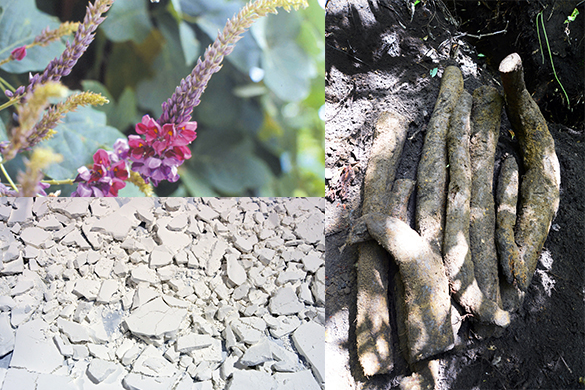
Characteristics of Hon-kudzu
Hon-kudzu is comprised of the smallest particles of starch, which have excellent water-retaining and emulsifying capacities. Among different types of starch, such as corn, potato, and sweet potato, Hon-kudzu has a delicate flavor and smooth texture. It is the world's highest quality culinary starch for its ability to bring out the umami of food ingredients.
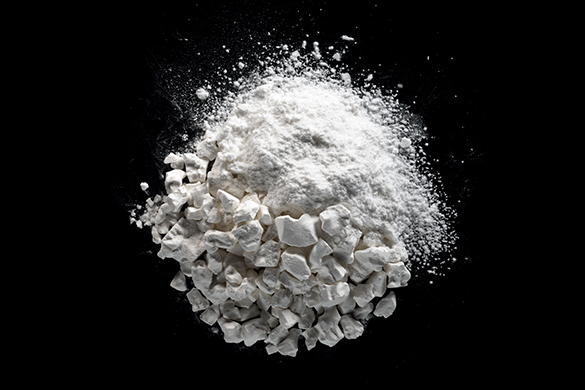
How Hon-kudzu is used
Kudzu flour has been appreciated as a wagashi*3 ingredient for its characteristics. When you dissolve it in a pot of water, heat it and stir, it thickens to form a white, semi-opaque gel. Kudzu-mochi*4 and the noodle-like Kudzu-kiri topped with sweet sauce (dark sugar syrup, etc.) are typical wagashi examples. It has been believed since ancient times to have “warming properties,” and the Japanese are familiar with a drink called Kudzu-yu made of Kudzu flour dissolved in hot water.
It is also used as an ingredient in various Japanese dishes, including sesame tofu, utilizing the form-retaining capacity of the heated Hon-kudzu solution, and ankake*5, which accentuates the natural flavors of ingredients. The gelatinous Hon-kudzu solution keeps its smoothness even when it cools down, so it is suitable for making sauces for Western-style dishes.
*3 Wagashi: Japanese confectionary
*4 Kudzu-mochi: a jelly-like confection made from arrowroot starch
*5 Ankake: A gelatinous sauce, often savory
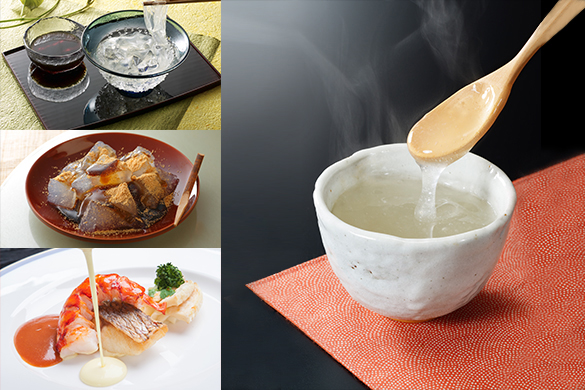
Hon-kudzu flour and Western-style cakes and pastries
Kudzu is a relatively new ingredient in Western-style confectionery, but the powdered type is used for its compatibility with eggs and fresh cream.
Its water-retaining and emulsifying capacities keep baked goods moist and give them a melt-in-the-mouth texture. It also shortens the baking time and prevents the batter from collapsing.It is also allergen-free since it is pure starch derived from a natural material.
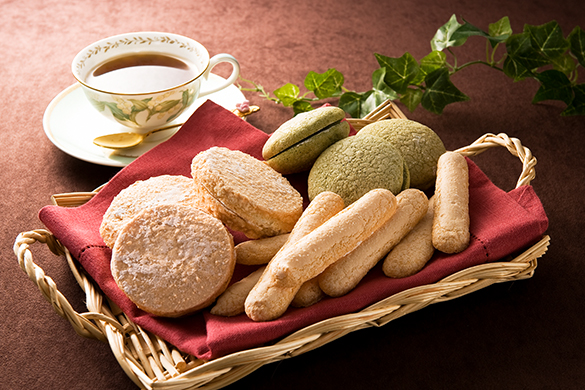
About Warabi and Hon-warabi flour
Warabi is a genus of ferns in the family Dennstaedtiacea, and it is a perennial that is widely distributed in temperate and tropical regions, including Japan.
The roots contain a small amount of starch (about six percent of the root’s weight), and Hon-warabi flour is made of the starch extracted from mashed roots. The population of warabi is decreasing, as with kudzu, so we also use cultivated ones for producing Hon-warabi.
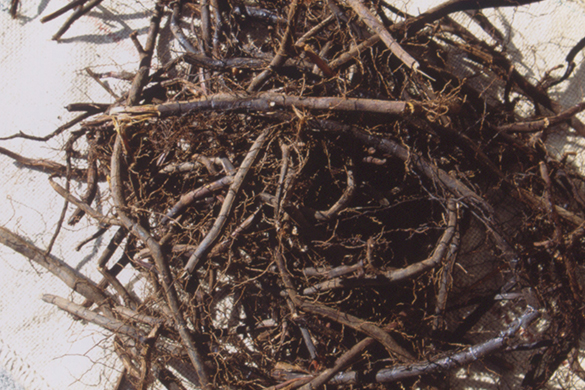
How Hon-warabi flour is used
Warabi starch was used as glue in the olden days for producing traditional Japanese paper umbrellas, lanterns, and external walls because of its higher viscosity than other types of starch.
It is primarily used in food, and as with Hon-kudzu, it is used in making wagashi (warabi mochi*6, warabi manju*7, etc.). Hon-warabi flour is rarely used in Western-style cakes and pastries. Still, it is becoming increasingly common to use warabi mochi, which has a distinctive texture, in cream puffs, Swiss rolls, and toppings for drinks.
*6 Warabi mochi: A jelly-like confection made from bracken starch.
*7 Warabi manju: A dumpling made from bracken starch, sometimes filled with sweet bean jam, etc.
